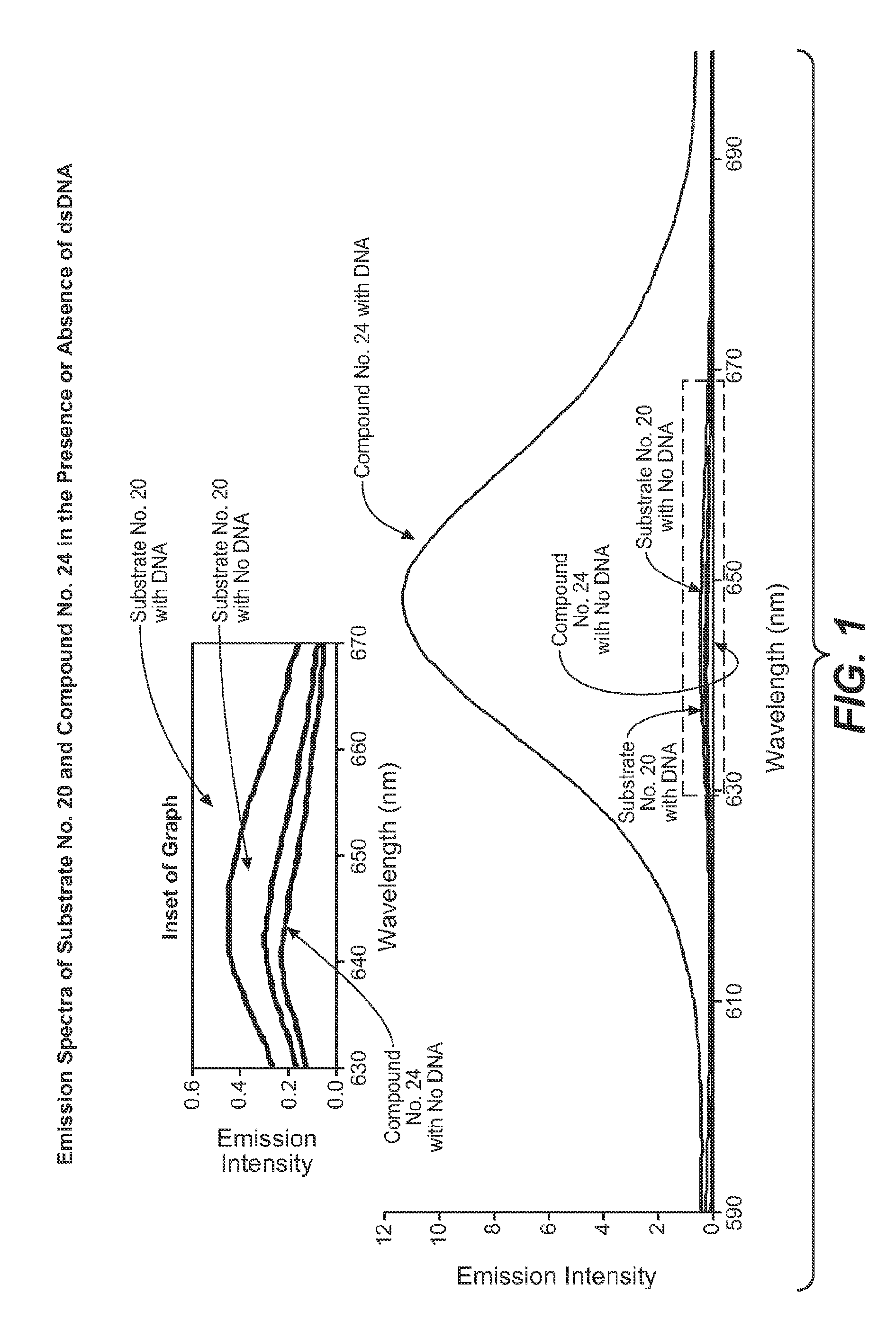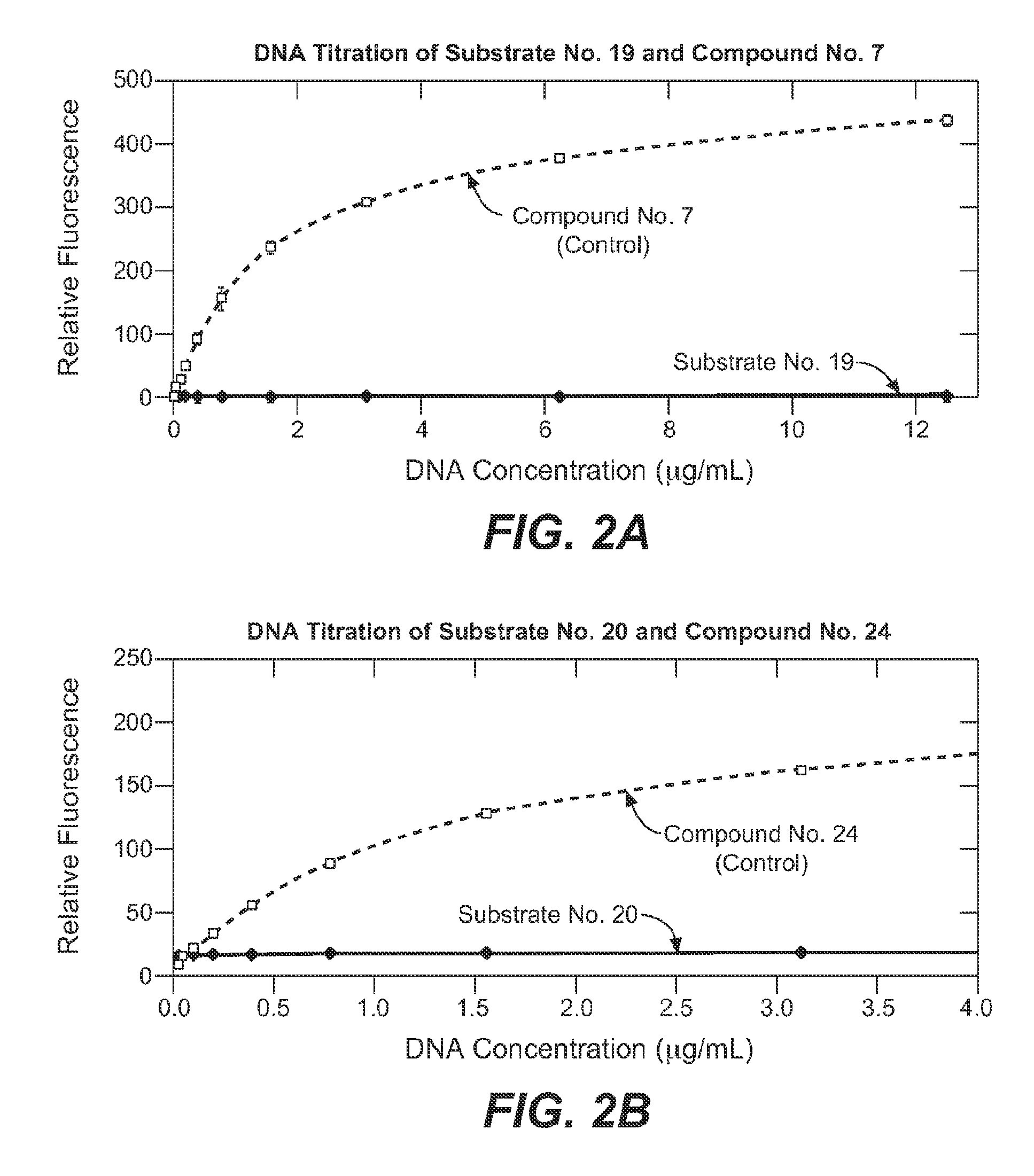Enzyme substrate comprising a functional dye and associated technology and methods
a technology of enzyme substrate and functional dye, which is applied in the field of enzyme substrate comprising a functional dye, can solve the problems of large molecular weight, large molecular weight, and inability to achieve the effect of functional dy
- Summary
- Abstract
- Description
- Claims
- Application Information
AI Technical Summary
Benefits of technology
Problems solved by technology
Method used
Image
Examples
example 1
Preparation of Compound No. 1
[0177]2-Methylbenzothiazole (4.51 g, 30 mmoles) and methyl p-toluenesulfonate (5.62 g, 30 mmoles) were mixed in a 50 mL round-bottom flask and heated at 110° C. for 24 hours. The resulting solid was triturated with ether (100 mL) and then collected by suction filtration. The collected solid was dried under vacuum at room temperature for 24 hours to give Compound No. 1, namely, 2,3-dimethylbenzothiazolium p-toluenesulfonate.
example 2
Preparation of Compound No. 2
[0178]A suspension of Compound No. 1 (1.1 g, 3.28 mmoles) and N,N′-diphenylformamidine (1 g, 5.1 mmoles) in Ac2O (3 mL) was stirred at about 110° C. for about 1 hour. The reaction mixture was cooled to room temperature and then poured into ether (50 mL). The solid was collected from the solution by suction filtration and then dried under vacuum to give Compound No. 2, as generally represented by the structure below.
[0179]
example 3
Preparation of Compound No. 3
[0180]A mixture of lepidine (5 g) and 4-bromobutyric acid ethyl ester (5 equivalents) was heated at 130° C. for 24 hours. The oily product was thoroughly triturated with ethyl acetate, suction filtered and then dried under vacuum to give the Compound No. 3, as generally represented by the structure below.
[0181]
PUM
| Property | Measurement | Unit |
|---|---|---|
| emission collection wavelength | aaaaa | aaaaa |
| emission collection wavelength | aaaaa | aaaaa |
| emission wavelength | aaaaa | aaaaa |
Abstract
Description
Claims
Application Information
 Login to View More
Login to View More - R&D
- Intellectual Property
- Life Sciences
- Materials
- Tech Scout
- Unparalleled Data Quality
- Higher Quality Content
- 60% Fewer Hallucinations
Browse by: Latest US Patents, China's latest patents, Technical Efficacy Thesaurus, Application Domain, Technology Topic, Popular Technical Reports.
© 2025 PatSnap. All rights reserved.Legal|Privacy policy|Modern Slavery Act Transparency Statement|Sitemap|About US| Contact US: help@patsnap.com



